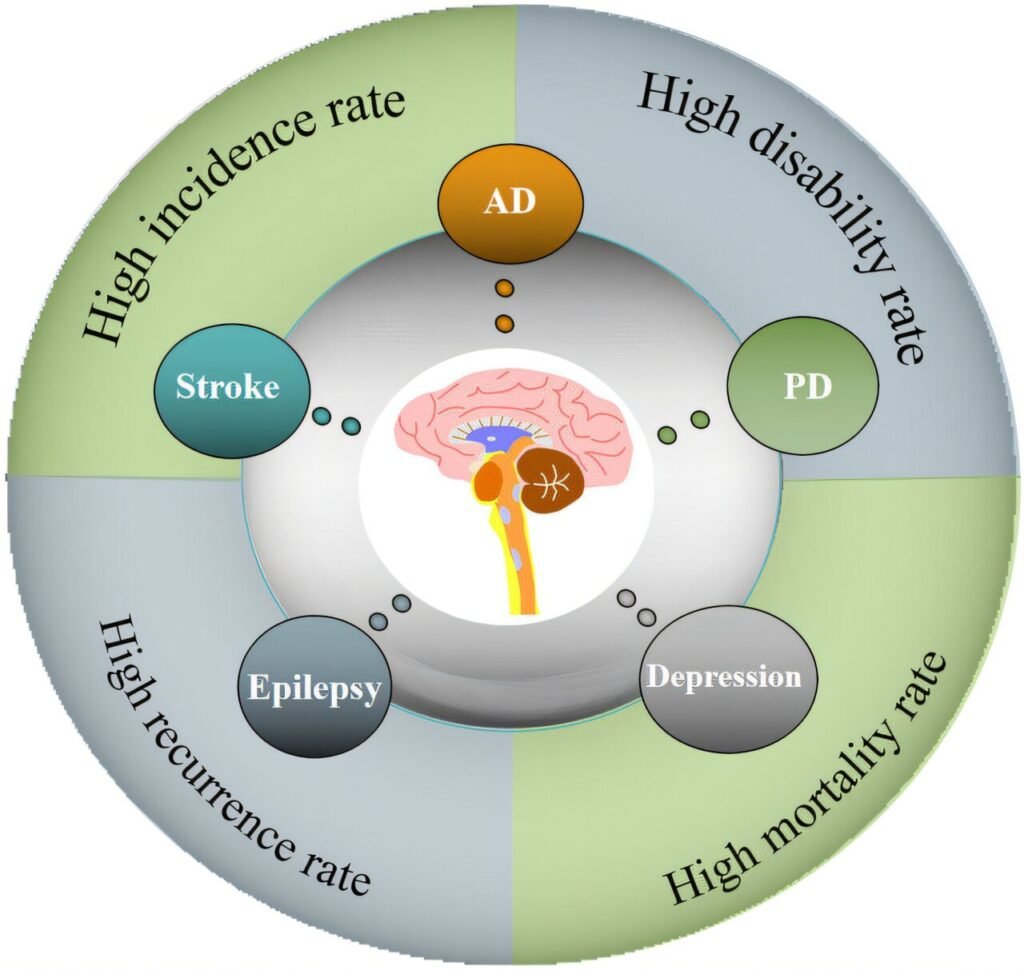Recent research conducted by Shandong researchers has shed light on the potential therapeutic benefits of edible and medicinal fungi for central nervous system (CNS) diseases. These findings suggest that certain bioactive components present in fungi could serve as novel pharmaceuticals or functional foods for the treatment of CNS diseases.
CNS diseases, characterized by complex pathophysiology and gradual symptom onset, pose significant challenges in terms of therapeutic evaluation. Conditions such as Alzheimer’s disease, Parkinson’s disease, epilepsy, and depression have been on the rise due to factors like aging populations and increased stress levels. However, the pharmacological development for CNS diseases remains limited, with current treatments only providing symptomatic relief without halting disease progression.
Traditional Chinese medicine has long utilized edible and medicinal fungi, which contain various bioactive components like polysaccharides, flavonoids, and terpenoids known for their antioxidant, anti-inflammatory, and neuroprotective properties. Recent studies have explored the potential of these components in treating CNS diseases, targeting oxidative stress, neuroinflammation, and neuronal cell survival.
In a study published in the Journal of Food Science titled “New Dawn of Edible and Medicinal Fungi: Unlocking Central Nervous System Diseases,” researchers reviewed existing literature to assess the therapeutic potential of bioactive components in fungi. Specifically, studies on Ganoderma lucidum, Cordyceps militaris, Hericium erinaceus, and Antrodia camphorata highlighted neuroprotective, antioxidant, and anti-inflammatory effects.
For example, Ganoderma lucidum was found to regulate microglial and astrocytic activity, while Cordyceps militaris selenium peptides showed promise in modulating inflammation and oxidative stress. Antrodia camphorata extracts were associated with reduced infarct size in stroke models, and Hericium erinaceus demonstrated effects on neurotransmitter regulation and anti-inflammatory pathways in depression studies.
The researchers emphasize the need for further validation of specific compounds, dosage optimization, and standardized extraction methods to advance the clinical applicability of these fungi-derived bioactive components. They also highlight the growing popularity of edible and medicinal fungi due to their health benefits and increasing medicinal value.
In line with the “Healthy China 2030” initiative, the Chinese government is promoting the integration of traditional Chinese medicine with Western pharmaceuticals. This strategic approach aims to combine traditional medicine with modern treatments as adjunct therapies for various health conditions. A nationwide traceability system has been established to ensure quality control and adherence to Western Good Manufacturing Practice standards.
While the research on traditional medicinal compounds shows promise, it is essential to conduct further studies, experimental verification, and clinical trials to confirm the therapeutic effects of these bioactive components. Overall, the integration of traditional Chinese medicine with modern pharmaceuticals offers a promising avenue for the development of novel treatments for CNS diseases.
In conclusion, the study underscores the potential of edible and medicinal fungi in the treatment of CNS diseases and the importance of further research to unlock their full therapeutic benefits. By leveraging the rich history of traditional Chinese medicine and integrating it with modern scientific practices, researchers aim to develop innovative pharmaceuticals and functional foods to address the growing burden of CNS diseases.


